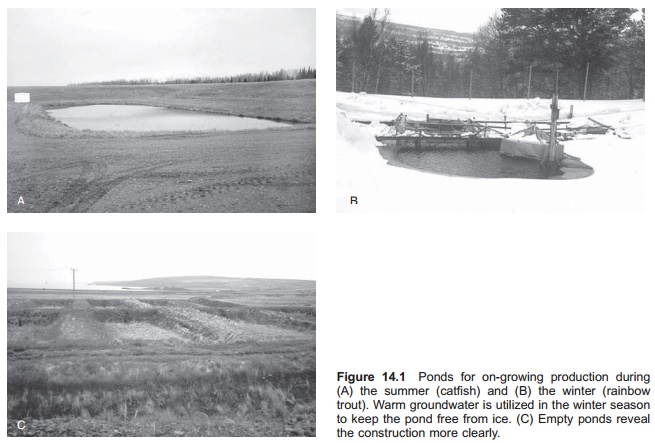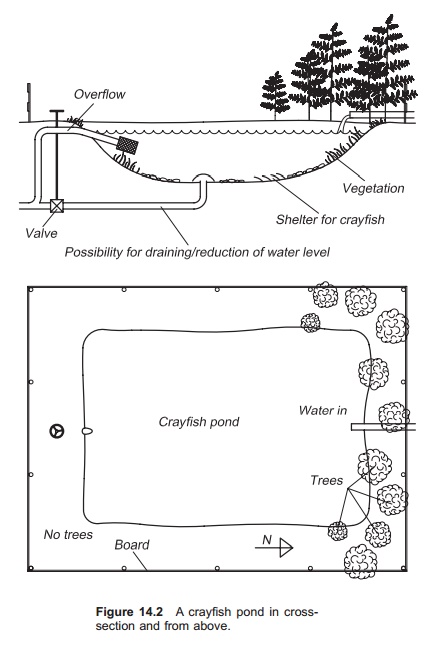Chapter: Aquaculture Engineering : Ponds
Different production ponds
Different production ponds
Ponds can be
separated into those for fry production and those for on-growing production
(Fig. 14.1); the difference is normally the size of the ponds. However, full
production ponds are also possible. In such ponds, spawning, fry production and
on-growing all occur, although harvesting can be quite difficult. Full
production ponds may, for instance, be used in crayfish production (Fig. 14.2).

In a pond for
fry production, it is especially important to have a well functioning
ecosystem, including photosynthesis. Eggs or newly hatched fry are released
into the pond where the on-going ecosystem will produce natural prey for the
fry. As the fry grow they will gradually feed on other prey that are also
available in the pond. Depending on the desired production, additional feeding
of the fry may not be necessary.

To stimulate
and increase the development of the natural ecosystem, it is possible to
fertilize the pond. This increases production of algae and hence production of
higher organisms that function as natural prey for the growing fry. It is,
however, easy to lose control of the ecosystem, and total breakdown may occur.
If fertilizing, it is therefore of major importance regularly to monitor and
control changes in the water quality, for instance by monitoring the oxygen
content in the pond water.
In on-growing
ponds, there is often some type of additional feeding, but this depends on the
species. Some species will utilize the plants growing in the pond and the organism
created by the ecosystem, but this is normally not enough if high production is
wanted; an example here is grass carp. Other species may only use supplied
artificial feed, such as catfish and rainbow trout. In on-growing ponds it is
easy to overload the system when adding formulated feed and cause problems in
the ecosystem which will be put out of balance so that the pond functions in an
uneconomic way.
The water flow
through a pond having a natural ecosystem must not be too high, otherwise algae
and natural prey may flow out with the outlet water, and an imbalance in the
ecosystem will occur. Many earth ponds are, however, used in this way. If the
fish densities are high the water requirements increase with the fish density
and the ponds function as raceways, for which the pond construction is
sub-optimal. The results are large variations in pond water quality and
accumulation of faeces and feed loss.
Related Topics